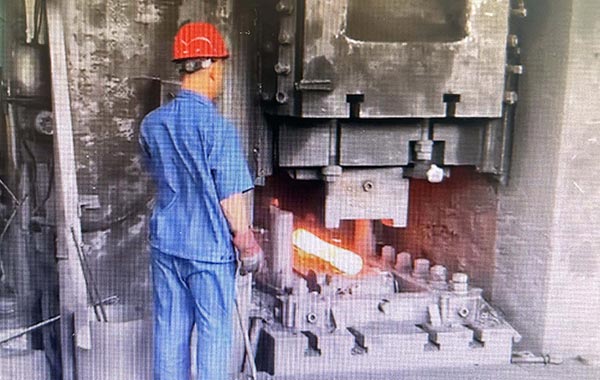Forging dies are essential tools in metal forming. Their design directly affects forging quality, die life, and production efficiency. Key considerations include metal flow, die strength, temperature control, and ease of maintenance.
1. Rational Die Structure Design
The die structure must be optimized based on the shape, size, and deformation characteristics of the forging.
- Parting Line:The parting line should be placed where metal flow is most natural and ejection and flash removal are convenient, avoiding reverse flow or laps.
- Fillet Transition:All forming regions should have proper fillet radii to ensure smooth metal flow and reduce stress concentration.
- Flash Gutter Design:Flash gutter dimensions should balance filling pressure and metal flow resistance—typically 3–8 mm wide and 1.5–3 mm deep, depending on forging size.
2. Die Material and Heat Treatment
Die materials must offer high strength, toughness, wear resistance, and thermal fatigue resistance. Common materials include H13, 5CrNiMo, and LD steels.
- Hot forging dies should possess excellent resistance to thermal cracking.
- Surface hardening or nitriding should be applied to improve hardness and wear resistance.
- For high-load applications, insert-type structures allow localized replacement and extend die service life.
3. Metal Flow and Filling Analysis
Proper metal flow is essential for forging quality.
- Metal flow simulation (e.g., CAE analysis) should be performed to predict filling behavior, temperature fields, and stress distribution.
- Dead zones, vortex regions, and underfilling must be avoided.
- Flow ribs or pre-forming operations can be introduced in thick sections to promote uniform metal flow.
4. Die Cooling and Lubrication Design
Temperature control directly affects die life and product accuracy.
- Cooling channels should be properly arranged, typically 10–15 mm from the die surface.
- Lubrication should match production rhythm—graphite or water-based lubricants are commonly used.
- Maintain uniform surface temperature to prevent thermal fatigue cracking.
5. Ease of Installation and Maintenance
The design should facilitate assembly, alignment, and replacement.
- Locating pins and guiding structures must ensure high precision and interchangeability.
- Segmented joints should allow easy disassembly and repair.
- Wear allowances should be reserved for future re-machining.
A well-designed die ensures high-quality forgings, longer die life, and lower costs — the foundation of efficient forging production.


